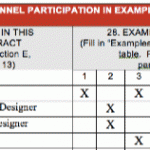
It’s hard to get anyone’s attention these days, especially a client who knows you want to sell them something.
I’m going to teach you a counterintuitive tactic, that I call the “One-Two Curiosity Punch,” which is guaranteed to get people’s attention.
Then I’m going to explain:
- Why it works
- How I’ve used it in everything from proposals to blog posts
But first, I need to tell you a secret I hid for twenty years.
You Thought Your Job Was Hard
In February 1986, at the CVS in Haddonfield, NJ, I begged my mom for 75 cents to buy my first comic book. She was shocked and explained that comic books should be 15 cents (they are $3.99 today). But reluctantly, she gave me the 75 cents and I bought DC Comics Presents #90 (starring Superman).
That started my love for superheroes, especially Superman.
Eventually, my mom instituted a $2 per week allowance. This was meant to teach me the value of money and the practice of saving. Of course, I spent nearly all of it at a local comic book store.
With $8 per month, I could buy up to 10 comic books per month. That sounds like a lot. But each month, the local comic book store filled a 50-foot wall with new comics. Not to mention, this store was filled with box after box of back issues that were often far less than 75 cents.
Think about this from the publisher’s perspective. This kid has hundreds of new comics each month to choose from. Plus, there are literally thousands of old comics he could buy for less money than a new issue. But he can only choose 10. How do you get this kid to buy your new issue?
And here, you think YOU have a lot of competition.
But fortunately for them, these publishers knew an extremely effective tactic to get my attention (and ultimately my money).
How To Sell Comic Books
These publishers had to capture my attention with a glance on the strength of the cover alone. Covers sell comics.
A tactic that worked on me every time was to put something completely unexpected on the cover. The cover would often depict Superman behaving completely out of character. Or he would be presented in a situation there is no way he would get into.
Then the cover would temp me with some juicy headline that highlighted something further that I didn’t know! Look at this example.

You wouldn’t expect Superman to tie Lois Lane to the front of a truck, drive it off a cliff, and then make a wise crack as she fell to her horrible death. But then they tell you she somehow comes back from the grave (probably to exact her revenge).
That’s the One-Two Curiosity Punch. Give them something unexpected and then highlight a gap between what they know and what they would like to know.
My favorite example of this tactic is actually a Batman cover.

First off, you don’t expect Batman to die. If that’s not enough, all his enemies are standing around his grave…each claiming they are responsible. Now, what 10-year-old boy wouldn’t buy that?
As you can see, the One-Two Curiosity Punch is extremely powerful.
How and Why This Tactic Works
We think of our brain as a thinking machine, but really it’s a prediction machine. When we see or hear something unexpected (something we wouldn’t have predicted), it’s like a shock to our brain. It throws a wrench into the works up there. That gets our attention.
The second part of the One-Two Curiosity Punch opens up what’s known as a “knowledge gap,” a gap between what we know and what we want to know. Knowledge gaps are what makes us curious. The concept of the knowledge gap is based on the research of George Loewenstein.
Something they wouldn’t have predicted gets their attention. Opening up a knowledge gap keeps their attention. It’s an extremely powerful one-two punch. But is it really practical for day-to-day marketing tasks?
How I Apply The One-Two Curiosity Punch
I love to use this tactic in proposals, particularly in cover letters. Here’s an example:
Everybody else is going to tell you ____, but here’s what we are going to tell you.
Clients don’t expect you to describe, with any accuracy, what your competitors are going to tell them. But if you can, that’s unexpected and they will want to know why you are saying something different. Now, to pull this off, you have to know exactly what your competitors are going to say.
Here’s another example:
We believe [something unexpected], but we look at things a little differently. Let me explain…
In this example, I’m hitting them with something completely unexpected. Then I’m telling them I’m going to explain why we feel that way (why would someone believe something so seemingly crazy).
I’ll be honest, Principals who don’t understand or appreciate the science behind this will really need some convincing before they agree to use the One-Two Curiosity Punch in proposals. Luckily, there are other applications.
Using The One-Two Curiosity Punch On Your Website
The One-Two Curiosity Punch is perfect for turning a dull topic interesting. And to say I use it a lot would be an understatement.
The shocking proposal trick you’ll be talking about for weeks is a bit unexpected. Why would you be talking about one proposal trick for weeks?
In the beginning of the article, I tell the story of a proposal trick mentioned at a SMPS event. I explain why it was so shocking that our jaws dropped.
But I don’t immediately tell you what the trick is. I just open a knowledge gap. Many, many people went on to read that entire article.
When you think about it, that article is about a boring topic…proposal management. But people on LinkedIn debated it for weeks.
The One-Two Curiosity Punch is perfect for the web because nobody has to look at your content on the web. You have to earn their attention, earn their interest.
I’ve even used this tactic on landing pages.
This headline is surprising because marketing tools are usually so expensive. But then I take it further by mentioning that four of them are actually free. But which four?
That page has one of my highest conversion rates.
As you can see, the One Two Curiosity Punch has many, many applications.
My Deep Dark Secret
Once you hit junior-high, liking Superman is really uncool. From 15 to 35, I hid my love of Superman out of fear of social ostracization.
But once I had a son, I introduced him to Superman as soon as I could.
Now he runs around the house pretending to be the man of steel. More accurately, we fly and zoom around the house living out our superhero fantasies.

If you liked this article, please subscribe below or on the right side of the homepage. If you want to give us your thoughts on this issue, please leave a comment below.






Spot on! Good insight. Thank you.
Thank you for reading!